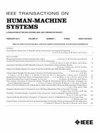利用多通道脑电-MEG 信号的多变量蜂群稀疏分解对认知视觉对象进行自动分类
IF 3.5
3区 计算机科学
Q2 COMPUTER SCIENCE, ARTIFICIAL INTELLIGENCE
引用次数: 0
摘要
在视觉对象解码中,脑磁图(MEG)和脑电图(EEG)的激活模式因其多变量振荡的性质而表现出最大的辨别认知分析能力。然而,记录的 EEG-MEG 信号中的高噪声和特定受试者的可变性使得对受试者对不同视觉刺激的认知反应进行分类极为困难。所提出的方法是蜂群稀疏分解法(MSSDM)的多变量扩展,用于对基于 EEG-MEG 的视觉激活信号进行多变量模式分析。相比之下,它是一种先进的技术,可将非稳态多分量信号分解为有限数量的通道对齐振荡分量,从而显著增强视觉激活相关子带。MSSDM 方法采用多变量蜂群滤波和稀疏频谱,可在特定信道的稀疏频谱中自动提供最佳频段,从而改进滤波器组。结合多变量 SSDM 和黎曼相关辅助融合特征(RCFF)的优点,研究了 MSSDM-RCFF 算法,以提高 EEG-MEG 信号的视觉物体识别能力。我们还提出了基于 MSSDM 的时频表示法,用于分析多通道 EEG-MEG 信号中不同视觉对象类别的判别认知模式。我们使用五种分类器在多变量合成信号和多变量 EEG-MEG 信号上对提出的 MSSDM 进行了评估。所提出的基于融合特征和线性判别分析分类器的框架优于所有现有的用于视觉对象检测的最先进方法,并在 EEG-MEG 多通道信号上使用十倍交叉验证达到了 86.42% 的最高准确率。本文章由计算机程序翻译,如有差异,请以英文原文为准。
Automated Classification of Cognitive Visual Objects Using Multivariate Swarm Sparse Decomposition From Multichannel EEG-MEG Signals
In visual object decoding, magnetoencephalogram (MEG) and electroencephalogram (EEG) activation patterns demonstrate the utmost discriminative cognitive analysis due to their multivariate oscillatory nature. However, high noise in the recorded EEG-MEG signals and subject-specific variability make it extremely difficult to classify subject's cognitive responses to different visual stimuli. The proposed method is a multivariate extension of the swarm sparse decomposition method (MSSDM) for multivariate pattern analysis of EEG-MEG-based visual activation signals. In comparison, it is an advanced technique for decomposing nonstationary multicomponent signals into a finite number of channel-aligned oscillatory components that significantly enhance visual activation-related sub-bands. The MSSDM method adopts multivariate swarm filtering and sparse spectrum to automatically deliver optimal frequency bands in channel-specific sparse spectrums, resulting in improved filter banks. By combining the advantages of the multivariate SSDM and Riemann's correlation-assisted fusion feature (RCFF), the MSSDM-RCFF algorithm is investigated to improve the visual object recognition ability of EEG-MEG signals. We have also proposed time–frequency representation based on MSSDM to analyze discriminative cognitive patterns of different visual object classes from multichannel EEG-MEG signals. A proposed MSSDM is evaluated on multivariate synthetic signals and multivariate EEG-MEG signals using five classifiers. The proposed fusion feature and linear discriminant analysis classifier-based framework outperformed all existing state-of-the-art methods used for visual object detection and achieved the highest accuracy of 86.42% using tenfold cross-validation on EEG-MEG multichannel signals.
求助全文
通过发布文献求助,成功后即可免费获取论文全文。
去求助
来源期刊

IEEE Transactions on Human-Machine Systems
COMPUTER SCIENCE, ARTIFICIAL INTELLIGENCE-COMPUTER SCIENCE, CYBERNETICS
CiteScore
7.10
自引率
11.10%
发文量
136
期刊介绍:
The scope of the IEEE Transactions on Human-Machine Systems includes the fields of human machine systems. It covers human systems and human organizational interactions including cognitive ergonomics, system test and evaluation, and human information processing concerns in systems and organizations.
 求助内容:
求助内容: 应助结果提醒方式:
应助结果提醒方式:


